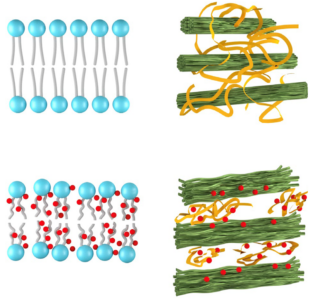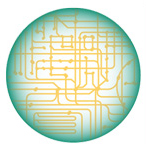Science Focus Area: Oak Ridge National Laboratory
- Principal Investigator: Brian Davison1
- Technical Co-Manager: Barbara R. Evans1
- Co-Investigators: James Elkins1, John Katsaras1, Jonathan Nickels2, Hugh M. O’Neill1, Arthur J. Ragauskas1,3, Loukas Petridis1, Sai Venkatesh Pingali1, Yunqiao Pu1, Jeremy C. Smith1,3, Micholas Dean Smith1,3
- Unfunded Collaborator: Charles E. Wyman4
- Participating Institutions: 1Oak Ridge National Laboratory; 2University of Cincinnati, 3University of Tennessee, 4University of California–Riverside
- Project Website: sfa-biofuels.ornl.gov
- KBase Collaboration: Protein Co-Evolutionary Analysis and Virtual Ligand Screening
Summary

Visualization of Solvent Disruption. The Biofuels SFA led by Oak Ridge National Laboratory (ORNL) conducts fundamental research underlying efforts to improve the production efficiency of biofuels and bioproducts. Emphasis is on understanding the potential of co-solvents (red) to disrupt both microbial cell membrane lipid bilayers (left) and plant biomass components (right) composed of cellulose fibers (green) and lignin (yellow). [Courtesy ORNL]
